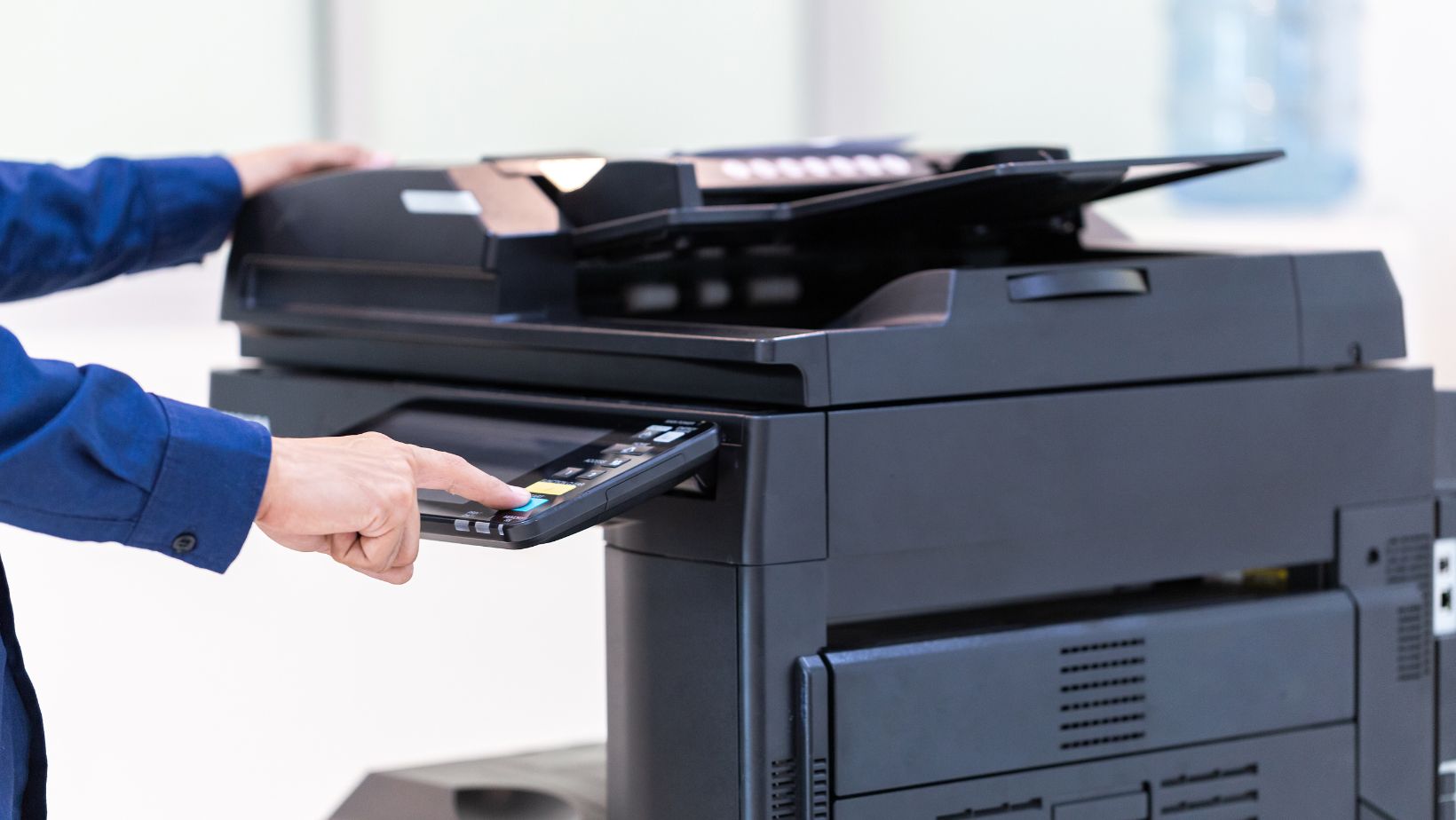
Direct-to-Film (DTF) printing is rapidly becoming one of the most sought-after methods for custom apparel printing, offering high-quality output with unmatched flexibility. While it’s already known for its versatility, mastering advanced DTF printing techniques—particularly for multi-color and intricate designs—can elevate your prints to a professional level. Whether you’re an entrepreneur, designer, or hobbyist, these advanced techniques will help you achieve the precision and vibrancy required for complex, multi-color designs.
In this guide, we will delve into the details of DTF printing, exploring how to prepare and print multi-color and intricate designs with accuracy and consistency. By the end, you’ll be equipped with the knowledge to tackle even the most complicated artwork using DTF technology.
Understanding DTF Printing for Complex Designs
At its core, Direct-to-Film (DTF) printing is a digital process where designs are first printed onto a special film and then transferred to a garment using heat press technology. This method has revolutionized custom printing, especially for intricate, multi-color designs that demand precision and vibrancy.
The beauty of DTF printing lies in its ability to handle a wide variety of fabrics, including light and dark materials, while producing high-quality full-color designs. However, printing complex artwork, such as gradients, fine details, and layered graphics, requires more expertise and attention to detail than simpler designs. The right techniques and equipment are essential to ensure your prints maintain sharpness, vibrancy, and consistency.
Choosing the Right Equipment for High-Quality Results
When working with multi-color and intricate designs, the equipment you use can make or break your print. Selecting the right DTF printer, film, ink, and heat press ensures the highest quality output for detailed artwork.
Prestige XL2 DTF Printer
For achieving the best results with multi-color designs, investing in a reliable DTF printer like the Prestige XL2 DTF printer is crucial. This printer is designed to handle high-quality, detailed prints with vibrant colors and precision. The Prestige XL2 utilizes advanced CMYK (cyan, magenta, yellow, and black) ink technology, which is essential for producing accurate color reproduction and fine details in your prints. It’s known for its large print bed, which allows for printing on a variety of fabric sizes, making it ideal for both small batch and large-scale production.
Transfer Film and Ink
Using high-quality transfer film and DTF-specific inks is another crucial aspect of successful multi-color prints. PET (polyethylene terephthalate) films are the standard for DTF printing, as they provide excellent ink adhesion and durability. Paired with specialized DTF inks, which are formulated to bond well with both the film and fabric, you can ensure vibrant, long-lasting prints.
Heat Press
The heat press plays a vital role in transferring the print from the film to the garment. To achieve the best results, ensure that your heat press offers precise control over temperature, pressure, and timing. This is especially important for multi-layered prints, where inconsistent heat can lead to uneven transfers or damaged designs.
Design Preparation and Optimization
When it comes to multi-color and complex designs, preparation is key. Taking time to optimize your design files can make all the difference in the final output.
Design Software for Multi-Color and Complex Artwork
For detailed artwork, it’s essential to use the right design software. Programs like Adobe Illustrator, Photoshop, or CorelDRAW are widely used for their ability to handle vector graphics, high-resolution images, and complex designs. Vector files, such as those in AI or EPS formats, are preferred as they ensure sharpness even when scaled.
Before printing, ensure your design is set to a resolution of 300 DPI (dots per inch) to maintain crispness and clarity. The higher the resolution, the more detail you can capture in the print.
Color Management: Ensuring Accurate Color Reproduction
Color accuracy is paramount, especially for multi-color designs. DTF printing uses the CMYK color model, so it’s crucial to convert your design from RGB (the color mode for digital screens) to CMYK. By doing this, you ensure that the printed colors match what you see on your screen.
Consider using color calibration tools or proofing your designs before printing to ensure accuracy. Many DTF printers, including the Prestige XL2 DTF printer, have color profiles that can be customized to help you achieve accurate and consistent results.
File Setup and Resolution for Complex Prints
To ensure high-quality prints, make sure your files are optimized for DTF printing. For multi-color designs, it’s recommended to use files with a resolution of 300 DPI or higher. This will ensure that fine details, such as small text or intricate patterns, remain crisp and sharp in the final print.
Advanced Printing Techniques for Multi-Color Designs
Once your design is optimized, it’s time to print. Here are some advanced techniques to help you achieve seamless, high-quality multi-color prints.
Layering Techniques in DTF Printing
Layering is essential when printing multi-color designs. DTF printing works by printing one color at a time, so it’s important to understand how to layer your colors for maximum precision. Start with the base colors, then build up the layers gradually. By carefully printing one layer on top of another, you can create complex designs with multiple colors that remain crisp and well-defined.
Precise registration is key when layering, as any misalignment can lead to blurry or uneven prints. Using alignment guides or registration marks can help ensure that each layer is perfectly aligned.
Using Special Inks for Better Detail and Color Vibrancy
For intricate designs, special inks can make a significant difference. Fluorescent, metallic, and even glow-in-the-dark inks can add unique effects to your prints. These inks can create standout, vibrant designs, especially on dark fabrics. The Prestige XL2 DTF printer is capable of handling a range of ink types, allowing you to experiment with special effects and push the boundaries of your designs.

Achieving Seamless Color Transitions and Gradients
Creating smooth gradients and seamless color transitions can be challenging, especially in multi-color designs. To achieve these effects, it’s important to control the ink flow and layer your colors properly. Using underlays (a base layer of ink) can help create smooth transitions between colors, avoiding harsh lines and gaps in the design.
Also, experiment with ink density to control how light or dark the gradient appears. Gradual transitions require careful attention to ink settings, as overly dense ink can result in a blotchy appearance.
Ideal Practices for Heat Transfer and Curing
Once your design is printed onto the film, the next step is the heat transfer process. The heat press is where the design is transferred to the fabric, and achieving the right settings is essential for a flawless print.
Optimizing Heat Press Settings for Complex Prints
When working with multi-color designs, temperature, pressure, and timing are critical. If the heat press settings are too high or too low, the transfer could be uneven, affecting the final result. A temperature of around 160-180°C (320-356°F) with moderate pressure is typically recommended for most fabrics. However, these settings should be adjusted based on the type of fabric you’re printing on.
Ensure the design is correctly positioned on the garment, as even slight misalignments can lead to registration issues.
Curing Techniques for Vibrancy and Durability
Curing your design properly is essential for ensuring the longevity of the print. Under-curing can result in fading or peeling, while over-curing can make the print too rigid. The goal is to find the perfect balance, ensuring that the colors stay vibrant while the print remains flexible and durable.
Proper curing also prevents smudging or smearing during the transfer, particularly when working with fine details.
Troubleshooting Common Issues with Multi-Color and Complex Designs
Even with the right equipment and techniques, issues may arise. Here are some common problems and their solutions:
Dealing with Color Bleeding and Smudging
Color bleeding often occurs when too much ink is applied or when the heat press settings aren’t correct. To avoid this, ensure that you’re using the right ink density and optimal heat press settings. Also, make sure the print is allowed to cure fully before handling.
Handling Ink Smearing or Uneven Transfers
If the ink smears during the transfer process, it could be due to excessive heat or pressure. Adjust the settings to avoid over-pressing the design. Test different temperature and pressure combinations to find the ideal settings for your multi-color designs.
Aligning Complex Designs During Transfer
Alignment issues are common in multi-color prints, especially when using multiple layers. Using registration marks and guides can help ensure that your design transfers accurately and with precision.
Conclusion
Mastering advanced DTF printing techniques for multi-color and complex designs requires the right equipment, proper preparation, and attention to detail. With the Prestige XL2 DTF printer, along with high-quality films, inks, and precise heat press settings, you can achieve vibrant, detailed prints that will stand the test of time. By experimenting with layering, special inks, and optimizing your design setup, you’ll be able to tackle any intricate project with confidence.






